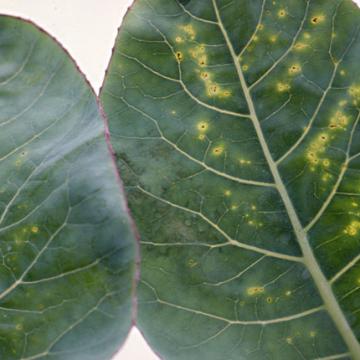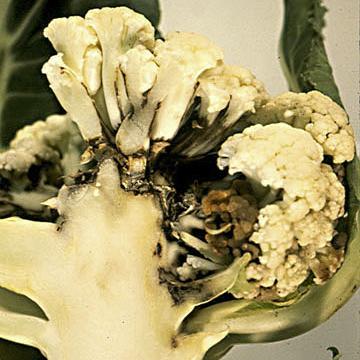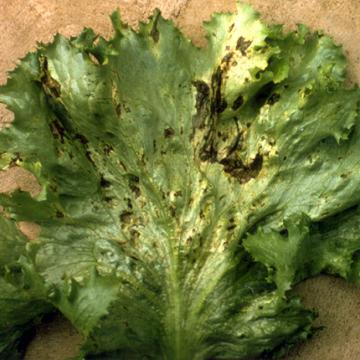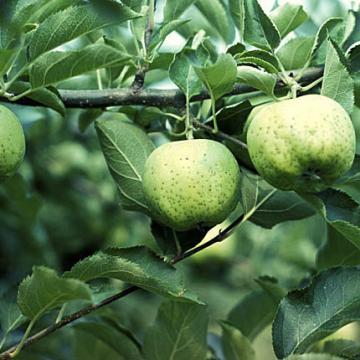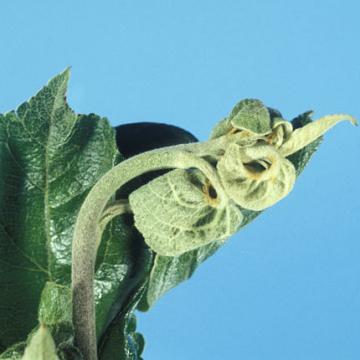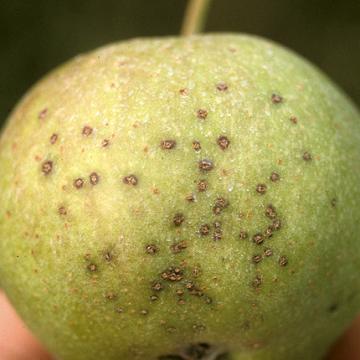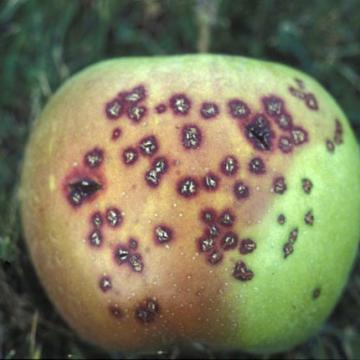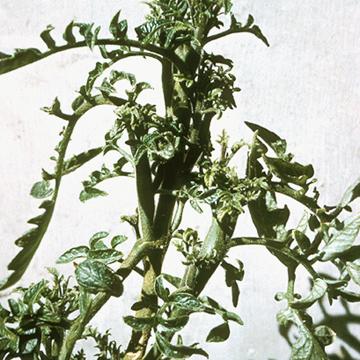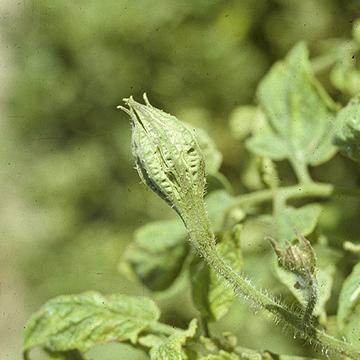DISEASE: Bacterial leaf spot (Head rot)
HOST: Cauliflower
Leaves with tiny lesions surrounded by large halos.
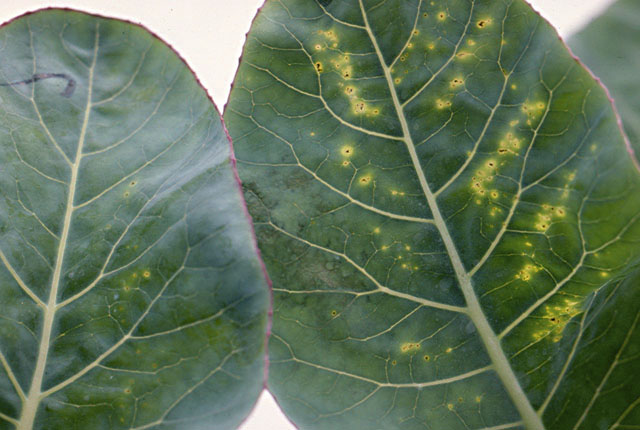
Bacterial leaf spot (Head rot) | Cauliflower
DISEASE: Bacterial leaf spot (Head rot)
HOST: Cauliflower (Brassica oleracea var. botrytis)
PATHOGEN: Pseudomonas syringae pv. maculicola
SOURCE: R. Campbell
DISEASE: Bacterial leaf spot (Head rot)
HOST: Cauliflower
Section of a cauliflower head with discolored, infected tissues.
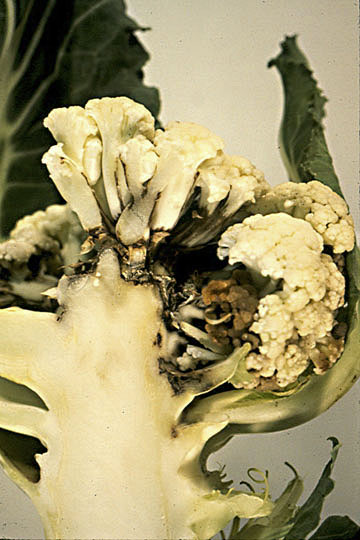
Bacterial leaf spot (Head rot) | Cauliflower
DISEASE: Bacterial leaf spot (Head rot)
HOST: Cauliflower (Brassica oleracea var. botrytis)
PATHOGEN: Pseudomonas syringae pv. maculicola
SOURCE: R. Campbell
DISEASE: Bacterial leaf spot (Head rot)
HOST: Lettuce
Leaf with black, greasy spots that tend to be vein delimited. Lesions begin as small, angular, water-soaked lesions that coalesce, resulting in large necrotic areas.
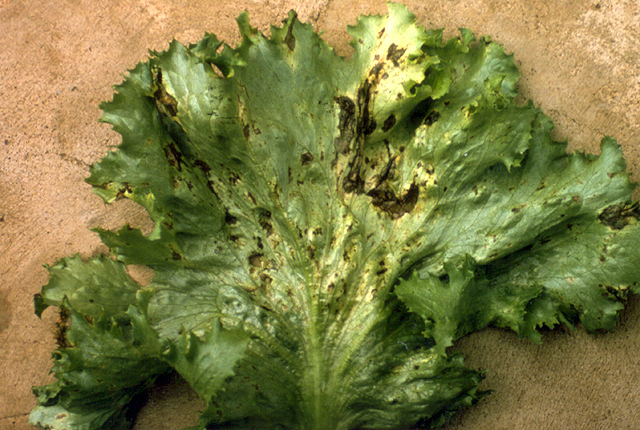
Bacterial leaf spot (Head rot) | Lettuce
DISEASE: Bacterial leaf spot (Head rot)
HOST: Lettuce (Lactuca sativa)
PATHOGEN: Xanthomonas axonopodis pv. vitians
PATHOGEN SYNONYM: Xanthomonas campestris pv. vitians
SOURCE: A. Alvarez
DISEASE: Blister spot
HOST: Apple
Fruit with water-soaked spots.
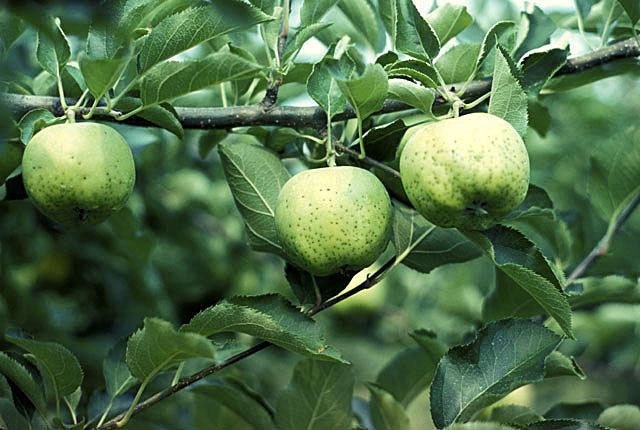
Blister spot | Apple
DISEASE: Blister spot
HOST: Apple (Malus domestica)
PATHOGEN: Pseudomonas syringae pv. papulans
SOURCE: T. Burr
DISEASE: Blister spot
HOST: Apple
Water-soaked blister spots on leaves of blighted twig.
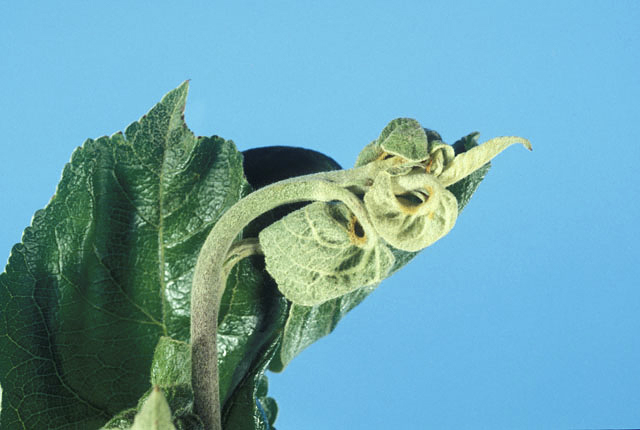
Blister spot | Apple
DISEASE: Blister spot
HOST: Apple (Malus domestica)
PATHOGEN: Pseudomonas syringae pv. papulans
SOURCE: T. Burr
DISEASE: Blister spot
HOST: Apple
Apple with brownish blister spots.
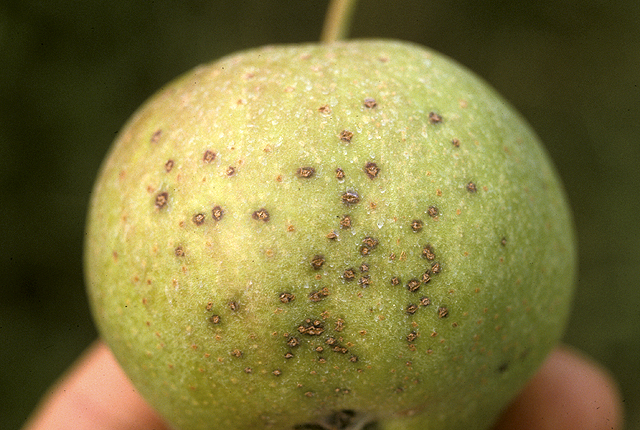
Blister spot | Apple
DISEASE: Blister spot
HOST: Apple (Malus domestica 'Mutsu')
PATHOGEN: Pseudomonas syringae pv. papulans
SOURCE: S. Thomson
DISEASE: Blister spot
HOST: Apple
Late stage of blister spot. The purplish black lesions are associated with lenticels and stomata.
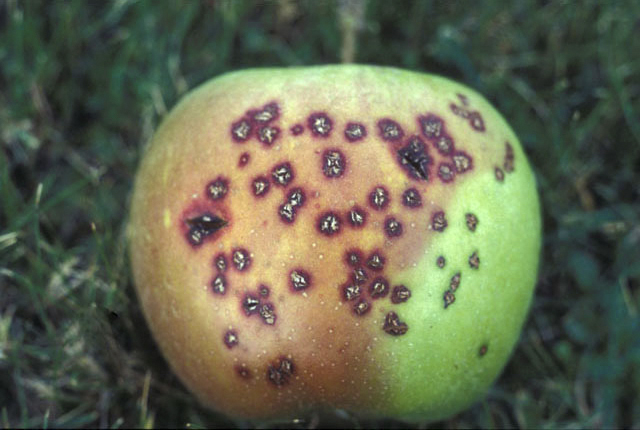
Blister spot | Apple
DISEASE: Blister spot
HOST: Apple (Malus domestica 'Crispin')
PATHOGEN: Pseudomonas syringae pv. papulans
SOURCE: T. Burr
DISEASE: Tomato big bud
HOST: Tomato
Characteristic symptoms are swollen, apical stems and stunted leaves. Apical stems are generally thickened and assume a stiff and erect growth habit. Internodes are shortened and flower buds are greatly enlarged.
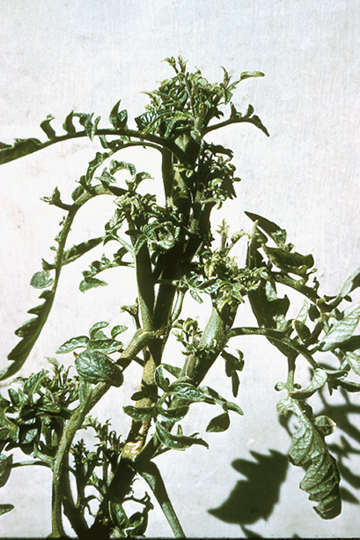
Tomato big bud | Tomato
DISEASE: Tomato big bud
HOST: Tomato (Lycopersicon esculentum)
PATHOGEN: 'Candidatus Phytoplasma asteris'
PATHOGEN SYNONYM: Phytoplasma Aster yellows group
SOURCE: D. Teakle
DISEASE: Tomato big bud
HOST: Tomato
Symptoms are enlarge sepals that do not separate. Flower buds stay green and do not develop into fruit. Leaves are small and chlorotic.
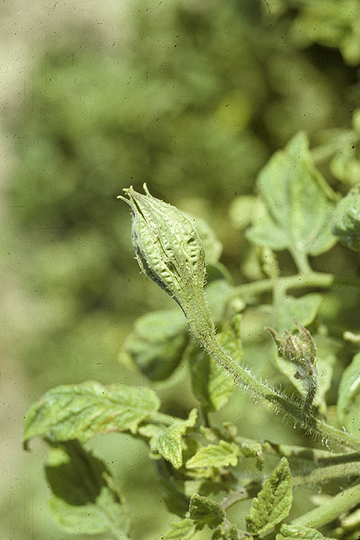
Tomato big bud | Tomato
DISEASE: Tomato big bud
HOST: Tomato (Lycopersicon esculentum)
PATHOGEN: 'Candidatus Phytoplasma asteris'
PATHOGEN SYNONYM: Phytoplasma Aster yellows group
SOURCE: S. Thomson


